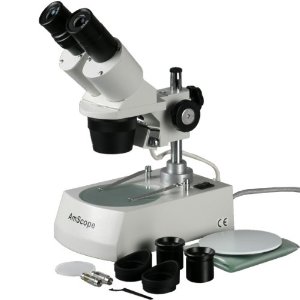
Most people who look at their coins like to see details — all the details.
But when should you buy a high-priced coin microscope and when is it best to simply stick with the trusty 5X magnifying glass you almost certainly already have?
The question can be answered this way:
- What are you looking for on your coins?
- Do you need to see every detail or can you live with what you can see through a good magnifying glass?
Benefits Of A Coin Microscope
If you are grading coins on a professional basis, you need to investigate minute errors and variances on coins.
Or, you may simply want to highly scrutinize your coins. A coin microscope is a great purchase.
When it comes to picking out the very best coins for your collection or investment portfolio, you need to gain a focus right to the tiniest detail.
Coin microscopes help you to spot things that you may not see so easily — if at all — through a regular magnifying glass.
Things You Can See With A Coin Microscope
Here are some of the things a coin microscope can help you clearly see:
- Flow lines: Minute lines that occur on the coin after striking; their absence on an uncirculated coin or a coin with only slight wear may mean the coin has been abrasively cleaned.
- Die-polishing marks: Raised lines or swirls on a coin produced by cleaning of the die, which is the stamp that produces an image on a coin.
- Slight errors: A mistake produced on a coin while still at the mint. Many errors are very valuable.
- Traces of mintmarks: A mintmark (or lack thereof) indicates where a coin was struck. On some coins, like the 1922- no mintmark (“plain”) penny, the complete absence of a mintmark makes for very valuable coins.
- Evidence of counterfeiting: Often detected through the discovery of added or removed mintmarks, date digits, or other lettering and design details. Also, counterfeiting can be detected on coins which appear to be manufactured outside the mint.
All of the above (and other elements) are the crucial issues that professionals consider when examining coins. What is more, all of these variables are best seen through a high-powered, well-made coin microscope.
A Good Coin Microscope Is Worth The Price
A good microscope can cost you well into the hundreds of dollars.
However, if you are someone who relies upon looking at and investigating every last detail on your coins, it really is well worth the money to consider buying a coin microscope.
A coin microscope is a fantastic buy for studious coin collectors and professional scrutinizers.
Still, in my opinion, the average collector really does not need to spend the money on a coin microscope.
Here is why: a well-made 5-20X magnifying glass or coin loupe can handle most of the duties that typical coin collectors need to take care of day-to-day.
Detecting Counterfeit Coins
I leave the counterfeiting detection to reputable third-party graders. I don’t even bother to buy super-scarce, rare, or expensive coins not housed in a “slab.”
As you may know, third-party graders examine the coins they put into their tamper-evident containers called slabs.
Therefore, anyone buying a coin in a slab need not worry much about buying a counterfeit coin, unless somehow the slab has been breached by an unscrupulous individual.
Such a situation would be rather obvious, due to damage that would usually be seen on the slab.
So… Coin Microscope Or Magnifying Glass?
For the inexpensive, unslabbed coins I purchase, I’m not that worried about counterfeiting.
I’m more concerned about cleanings, nicks, bruises, discoloration, dings, and other damage usually visible under low magnification — and very often quite evident to the trained, naked eye.
I do enjoy studying the details on my coins, but even this can be satisfactorily handled with a 5-10X coin magnifying glass or coin loupe.
Coin magnifying glasses and coin loupes can be purchased from most any coin dealer (both online and at a physical store) for less than $25.




